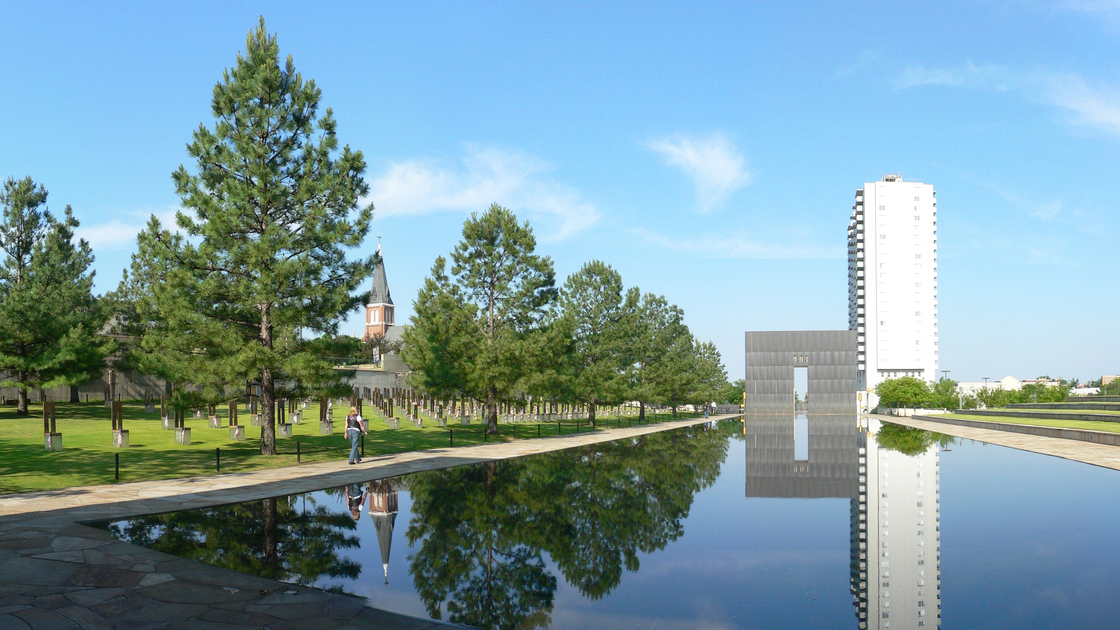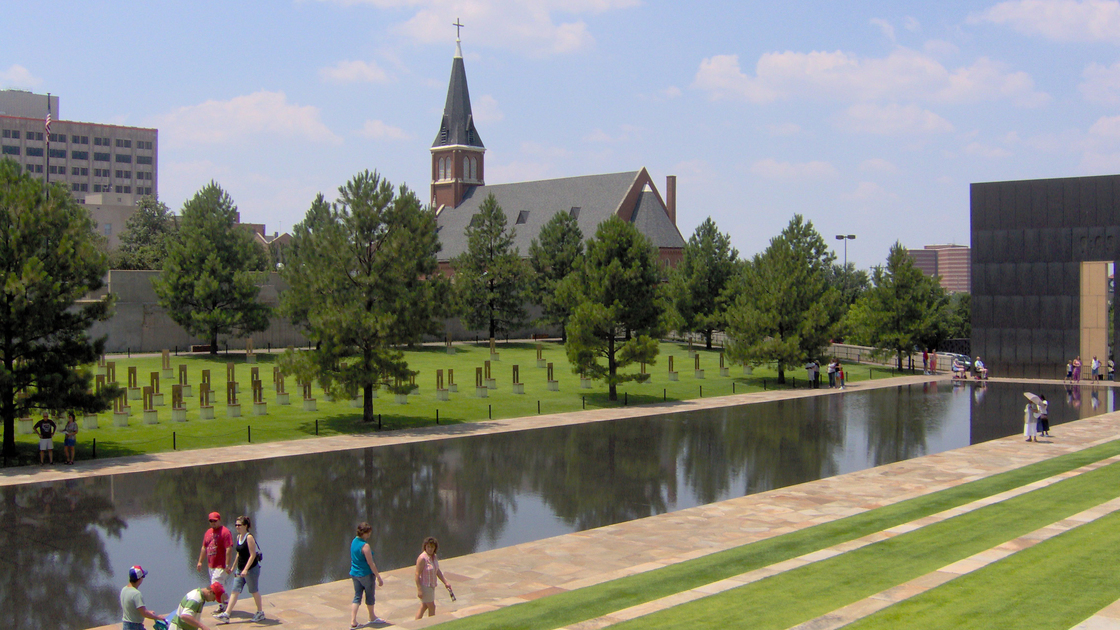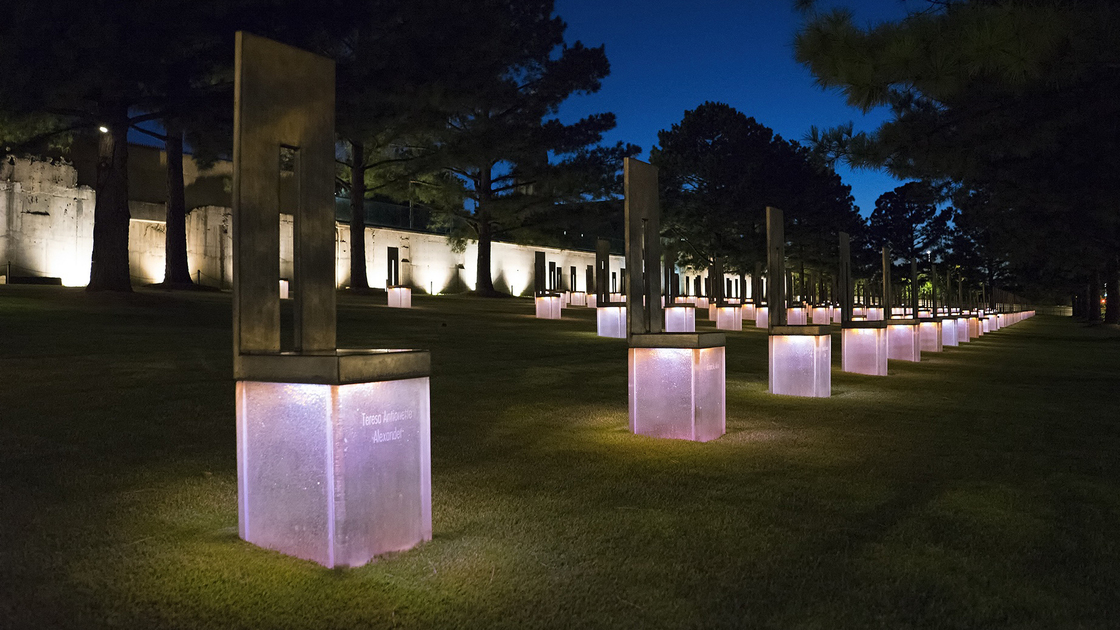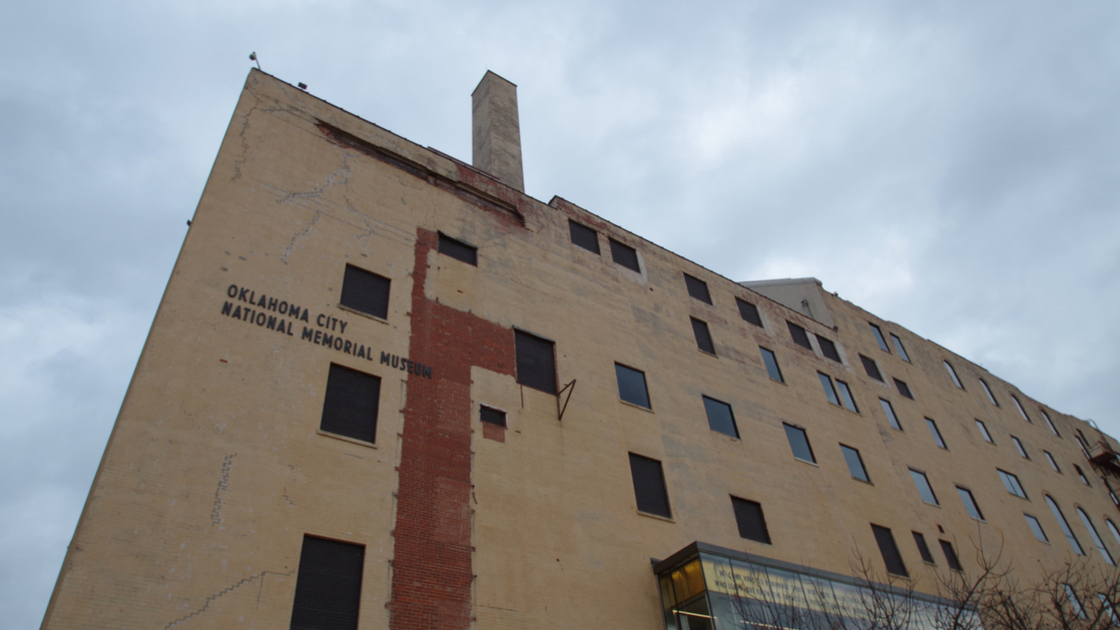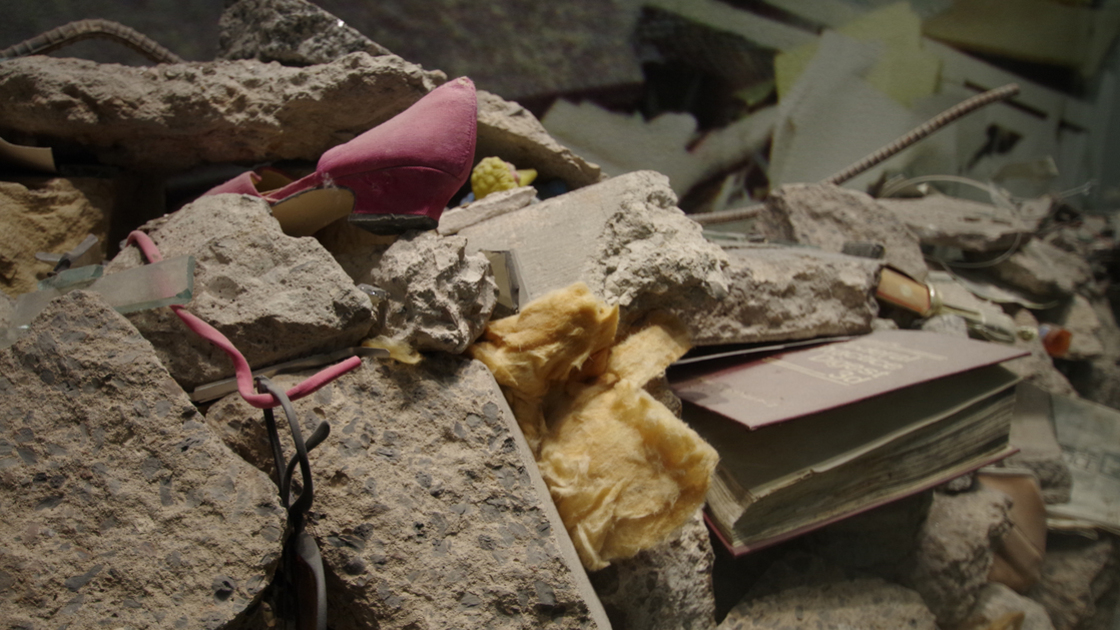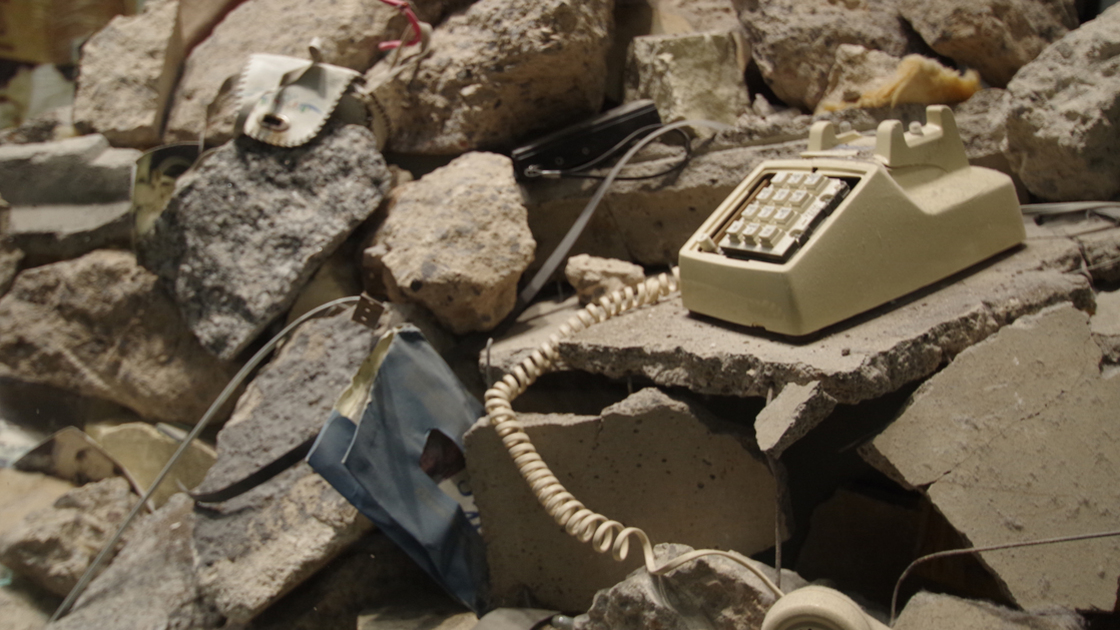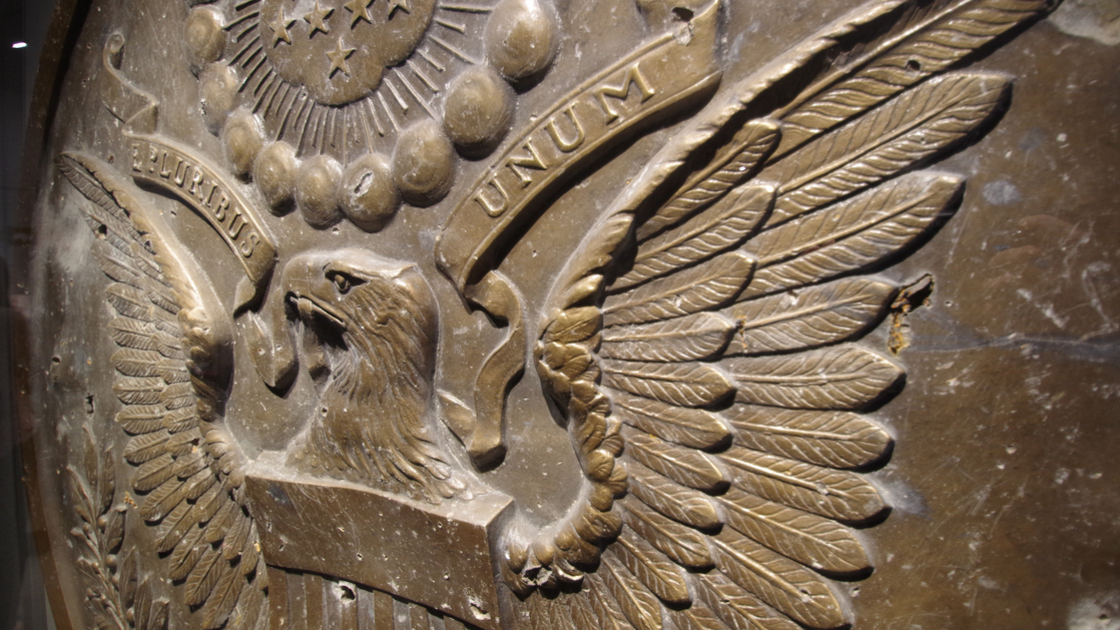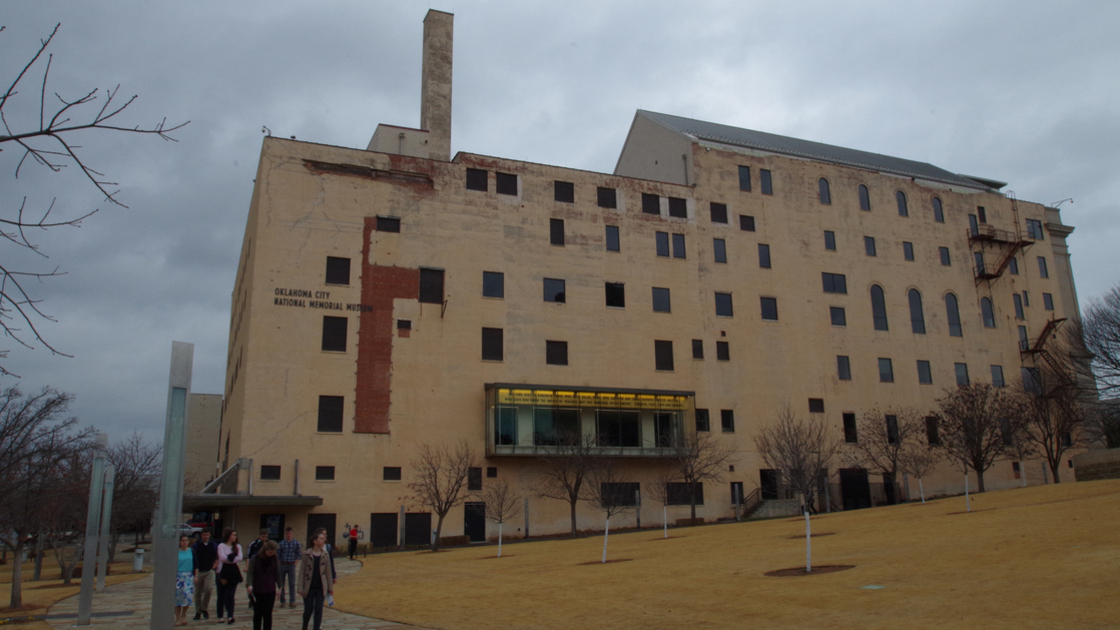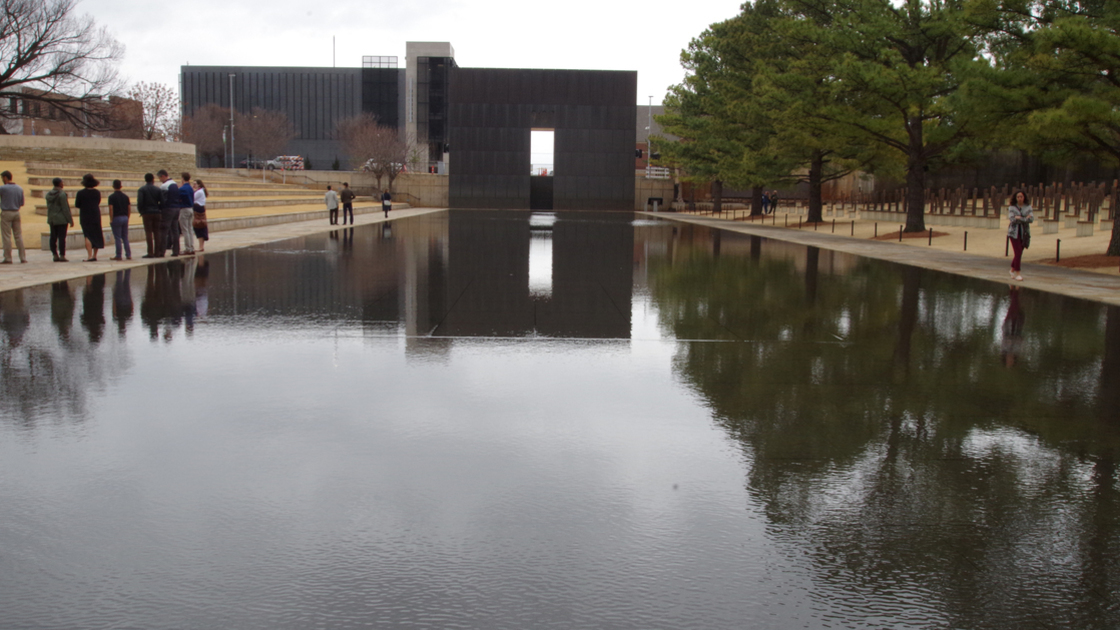EDMOND—Herbert W. Armstrong College students on February 19 visited the site of one of the worst terrorist attacks in United States history: the bombing of the Alfred P. Murrah Federal Building. The explosion on the morning of April 19, 1995, killed 168 people and injured almost 700. It is second only to the attacks of September 11, 2001, as the deadliest single act of terrorism in American history.
The bombing was perpetrated by Timothy McVeigh, Terry Nichols and co-conspirators who wanted to strike against and terrorize the U.S. federal government. McVeigh parked a rented moving truck in a drop-off zone in front of the building near its daycare center with the fuses already burning on a 5,000-pound homemade bomb.
Students visited the Oklahoma City National Memorial Museum, which walks visitors through the morning of April 19, a typical day in Oklahoma. The exhibit includes the recorded proceedings of a meeting that had been taking place near the Murrah building. The recording ends with the moment that the bomb detonated, damaging more than 300 buildings, demolishing a third of the Murrah building, wounding more than 680 people, and killing 168 men, women and children with shattering glass and collapsing rubble.
The doors to the room then open into a section of the museum portraying the destruction, debris, carnage, alarm and terror of the explosion and its aftermath as victims, living and dead, lay beneath crumbled concrete and rescuers desperately search for them. Exhibits also relate the motive, conspiracy, escape, arrest, investigation, trial and conviction of those who committed the attack.
“One thing that stood out to me was the recording of a survivor,” sophomore Ariana Eames said. “He said that one of his first reactions was just a lot of questions. All of them started with ‘Why.’ He said, ‘You just have to accept that there are no answers.’”
After touring the museum, students emerged from the building to the outdoor memorial, situated between two monumental bronze gates. One is inscribed “9:01,” the last minute of peace; the other is inscribed “9:03,” the first minute of recovery. The former street where the moving truck detonated at 9:02 is now a reflecting pool. The site is partially surrounded by a chain-link fence erected in 1995 after the bombing. Mourners hung mementos on the fence, a tradition that continues 23 years later. (The mementos are periodically removed and stored.)
The former site of the building is now a field of empty bronze chairs, which are illuminated at night, each inscribed with the name of a victim. The chairs represent the empty seats at their families’ dinner tables. The 19 smaller chairs represent the 19 children who died, and the names of three unborn children are inscribed with the names of their mothers.
Freshman Samantha Robson said the contrast between indoors and outdoors is stark, with the outdoor memorial being “calm and peaceful.”
Freshman Isaiah Morrison said, “The area with the chairs that had people’s names on them made me think about the time when God will give them a chance in the second resurrection.” Other students said they wished they could share the hope of the resurrection with survivors.
Toward the end of the tour, the students took a group photo at “The Survivor Tree,” a century-old American Elm whose branches were mostly destroyed by the bombing and whose bark was embedded with debris. It had been slated to be cut down, but at a memorial ceremony the following spring in 1996, it bloomed.
The Oklahoma City National Memorial is the beneficiary of Oklahoma City’s annual Memorial Marathon in April. As in past years, several Armstrong College students are training to participate in the event.
Dean of students Wayne Turgeon said that he vividly remembers the day: He and other workers at Philadelphia Church of God headquarters, 10 miles north of the blast site, felt the explosion, which also registered as a 3.0 earthquake. “It was a shock that the largest terrorist [attack] up to that point had hit so close to home,” he said.
“I had no idea what happened before coming here,” said Australian freshman Emma Moore. “It made me realize what great consequences terrorism has.” Freshman Matthew Barreiro added: “It is very sobering and interesting to see how history unfolds, especially as to how far human nature can go.”
Seeing photos of the victims and hearing the stories of their lives and deaths visibly moved many of the Armstrong students. Eames said: “The entire museum was a very emotional tour. Many of us were on the edge of tears the entire time, but it was a powerful trip, especially knowing the urgency of these times. Knowing that these events will only increase made it a lot more meaningful.”
Senior and student body president Gino Chi, from the Philippines, said, “The reason why these field trips are so valuable is because we students live in a sheltered place and often tend to forget some of the dangers and the suffering the world is going through. It is good to be reminded of these things so that we can learn to better help the people in the World Tomorrow.”
